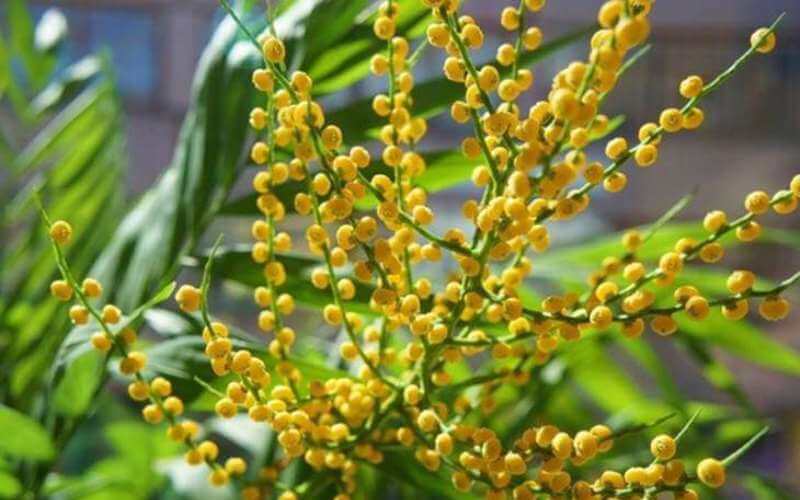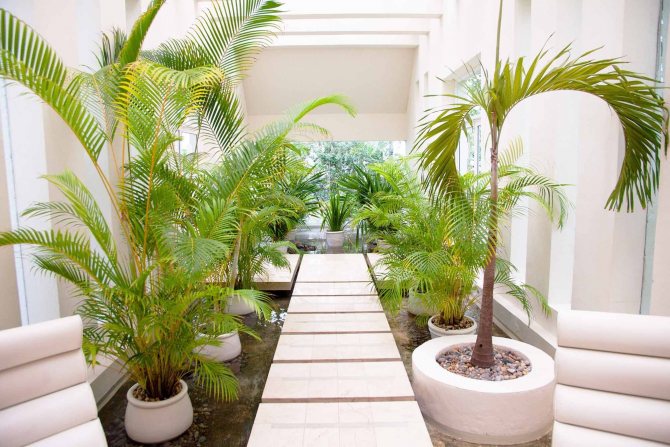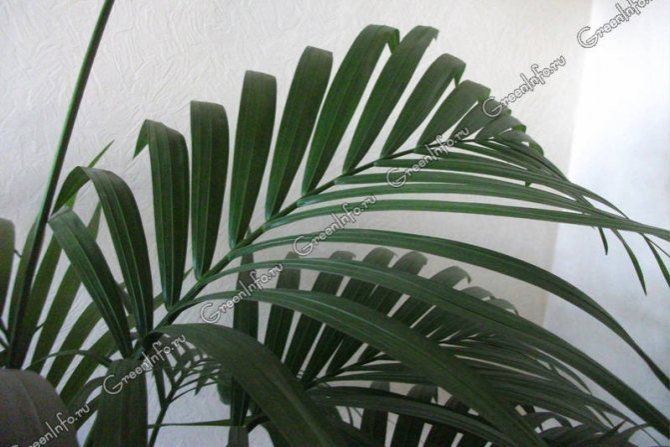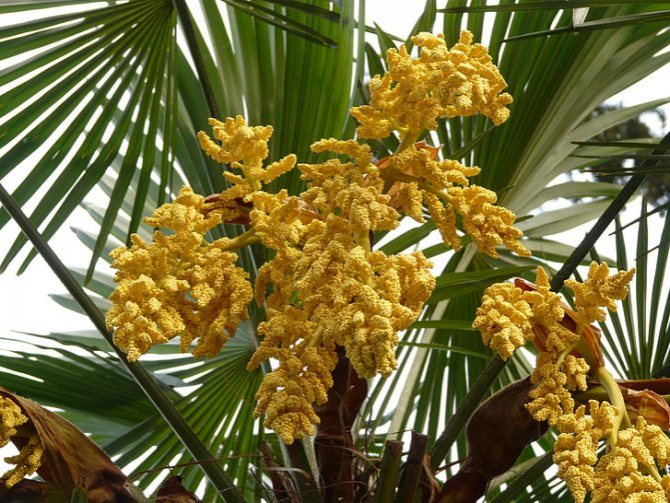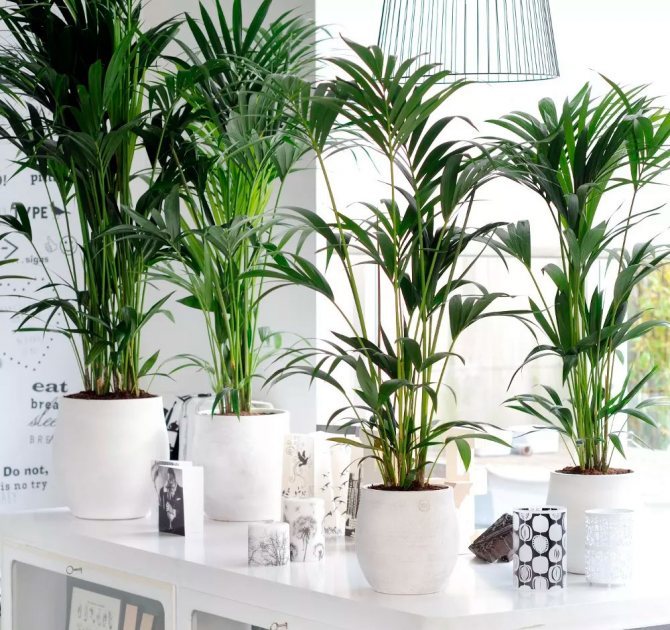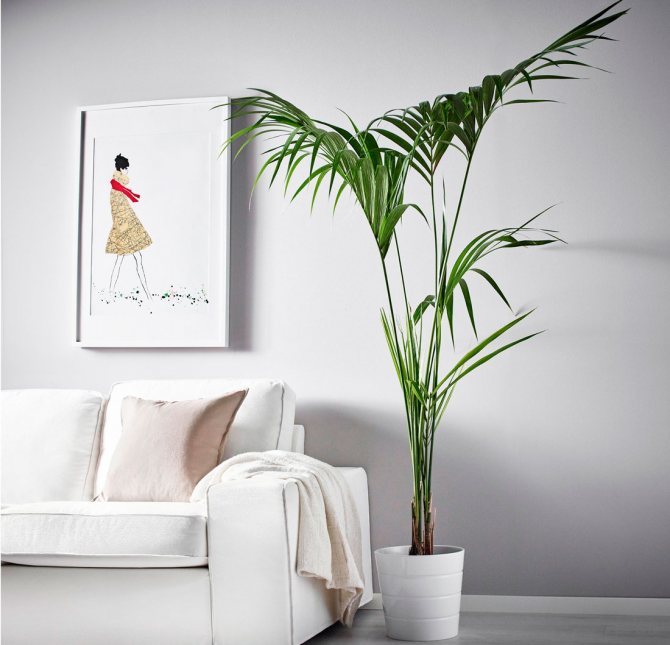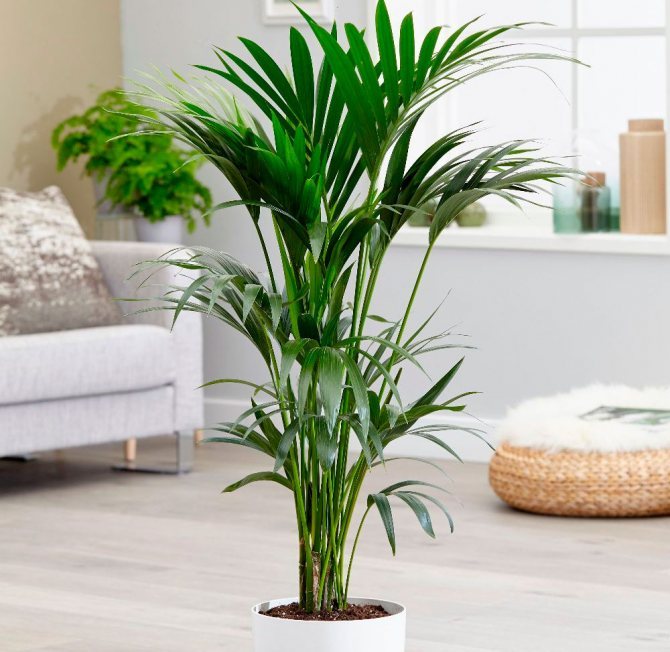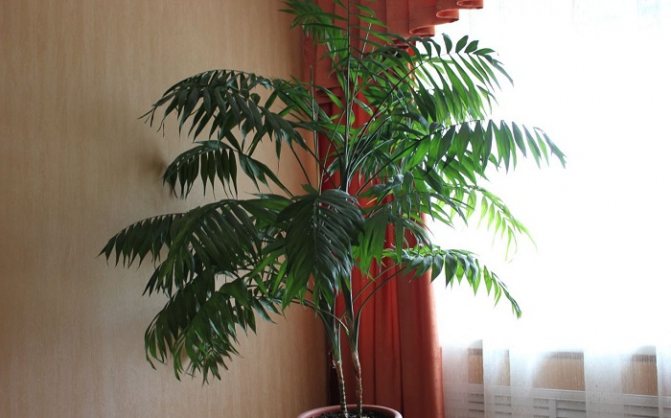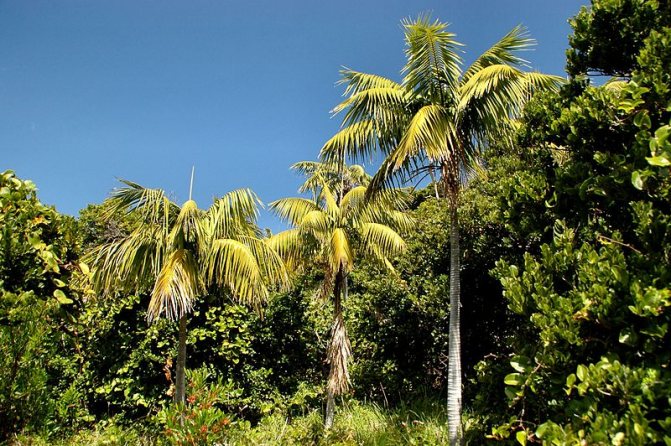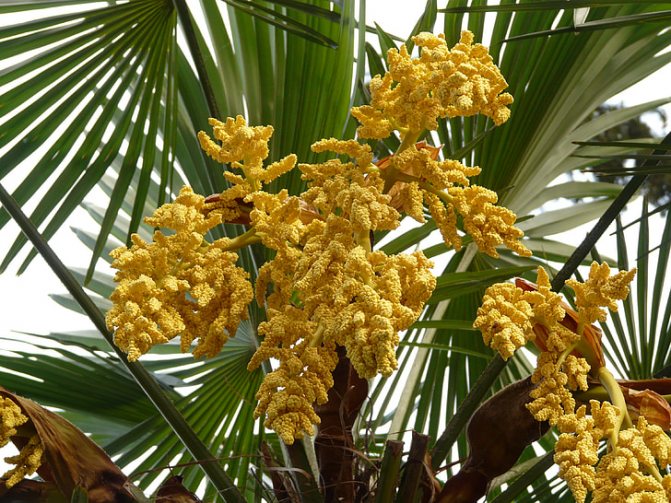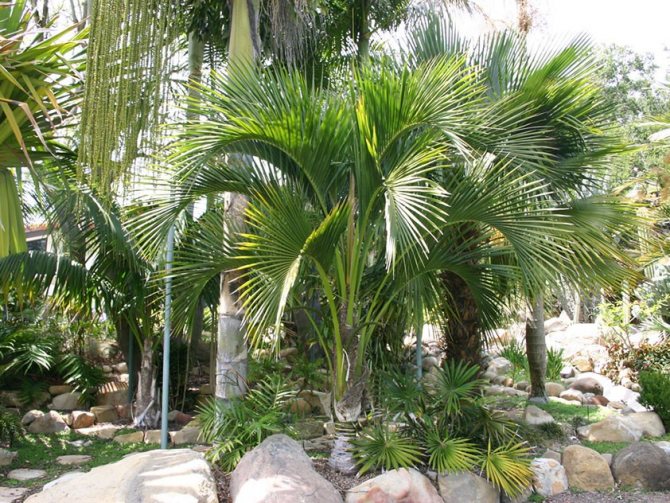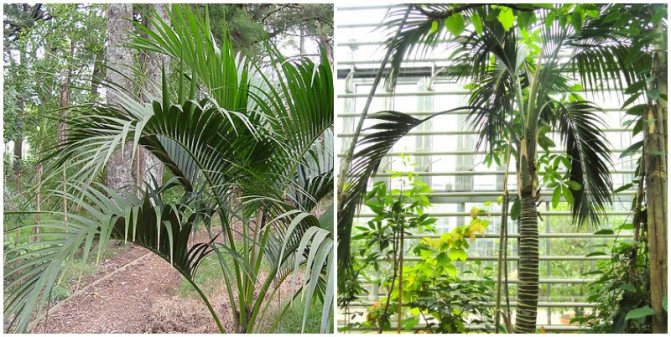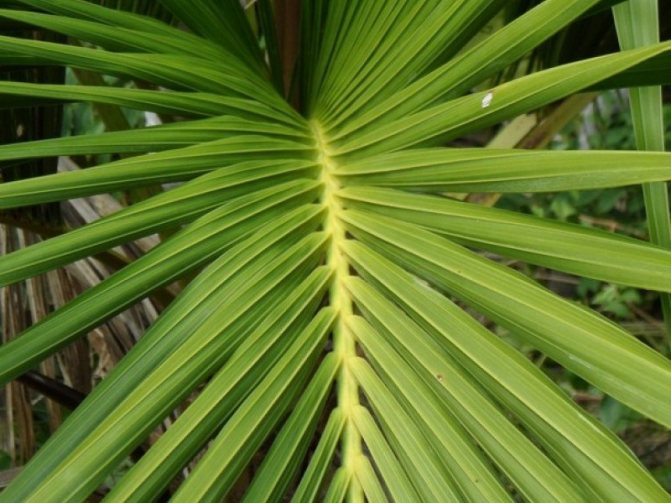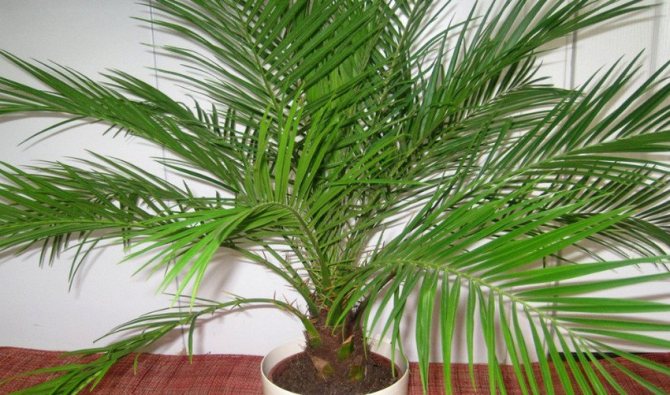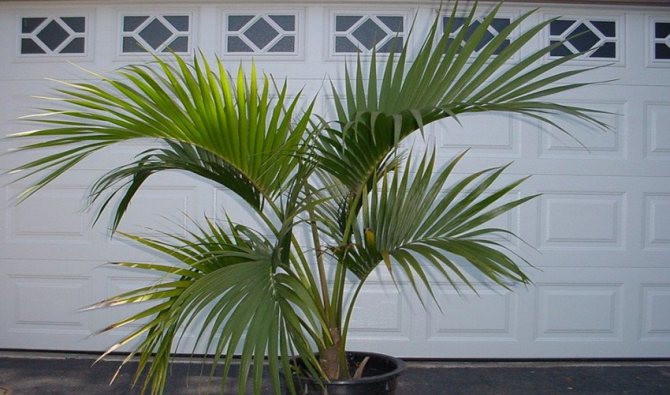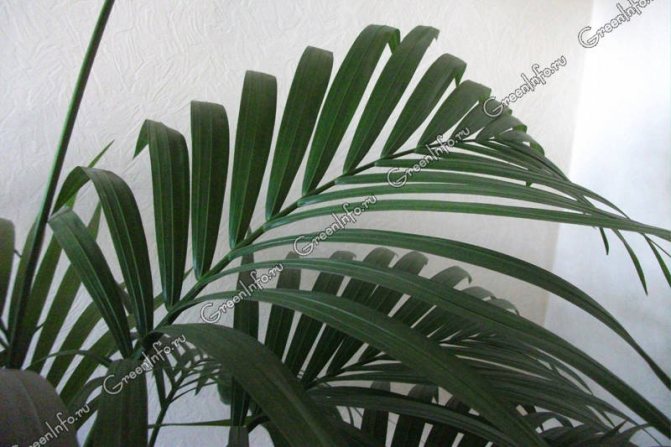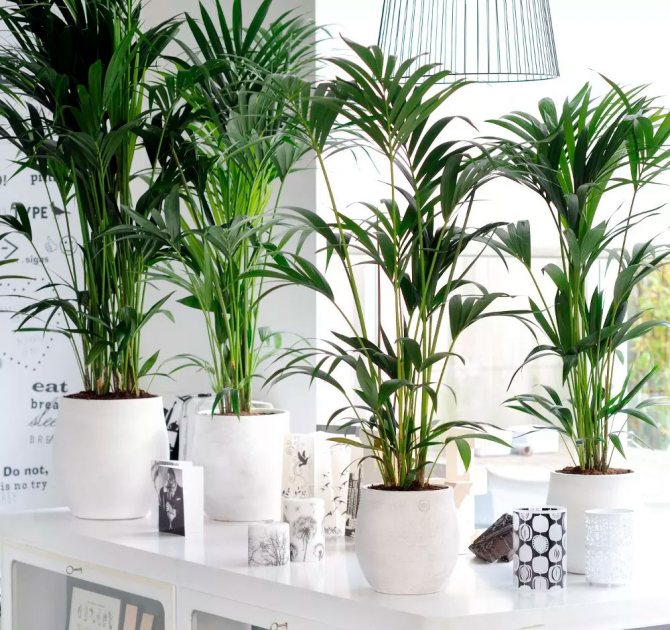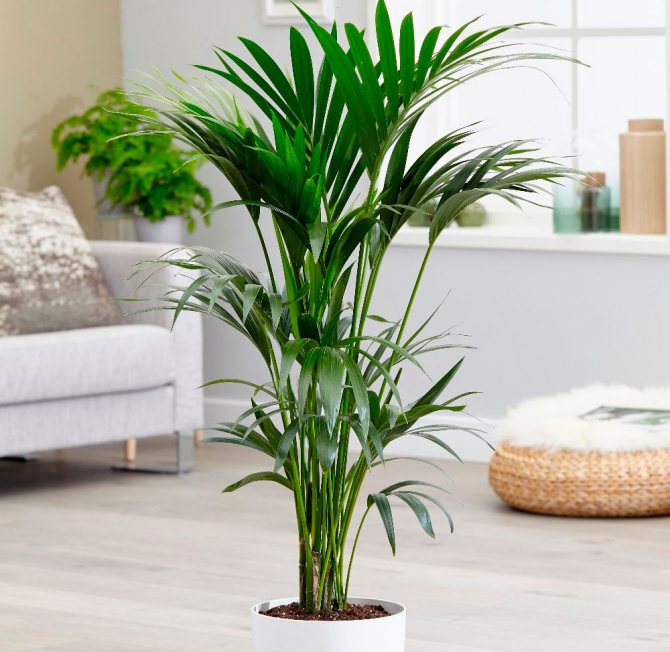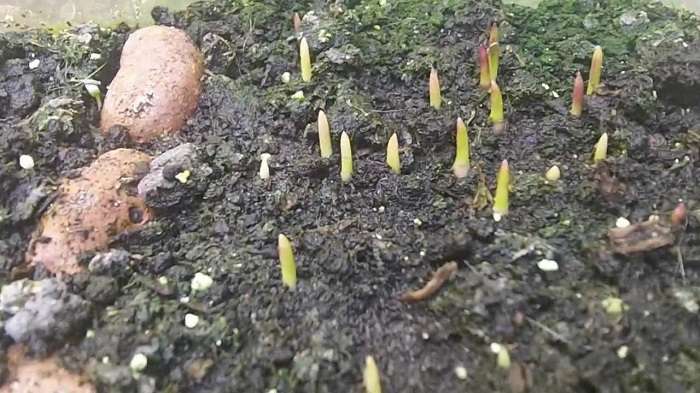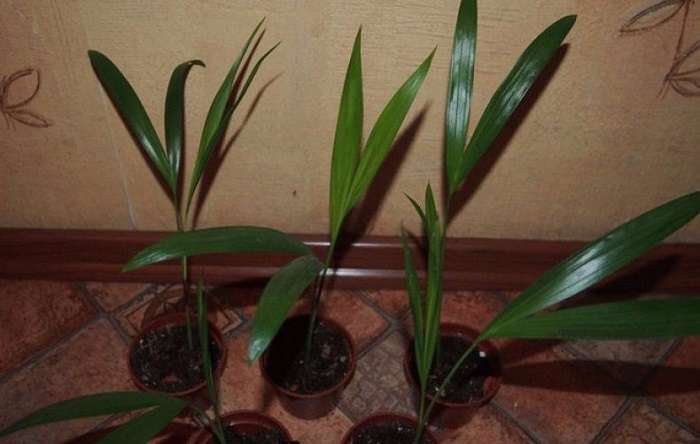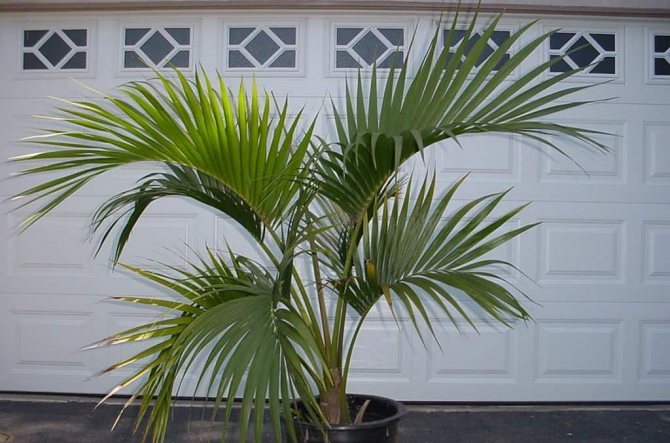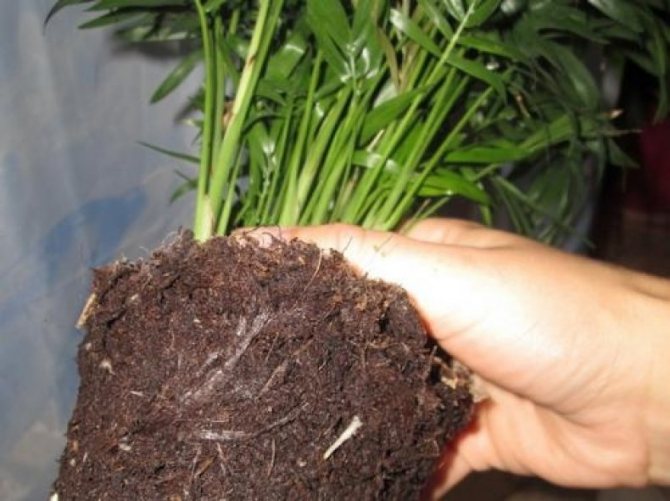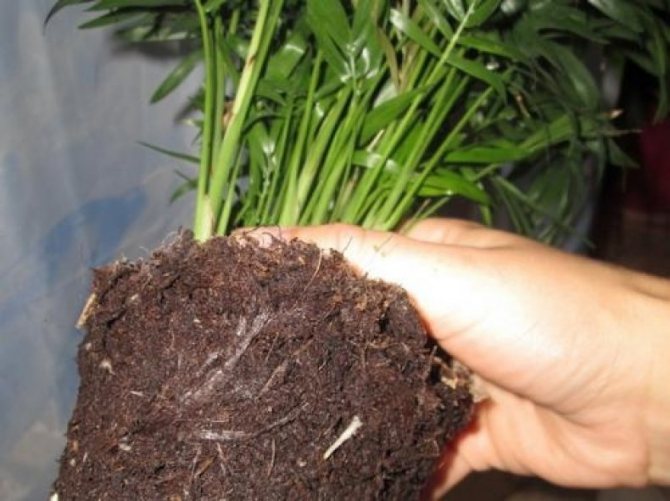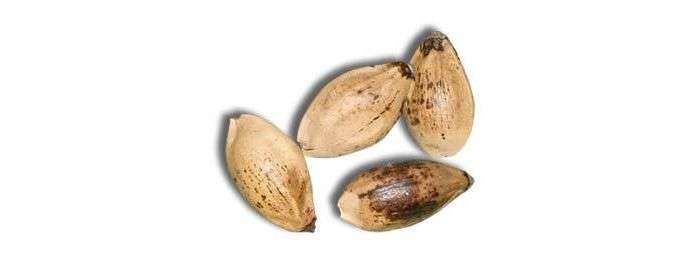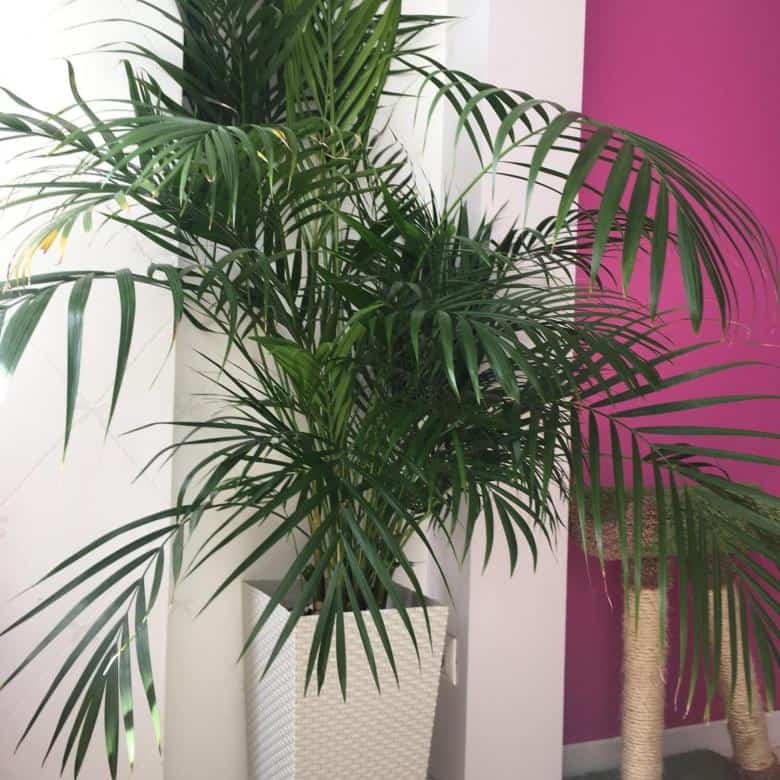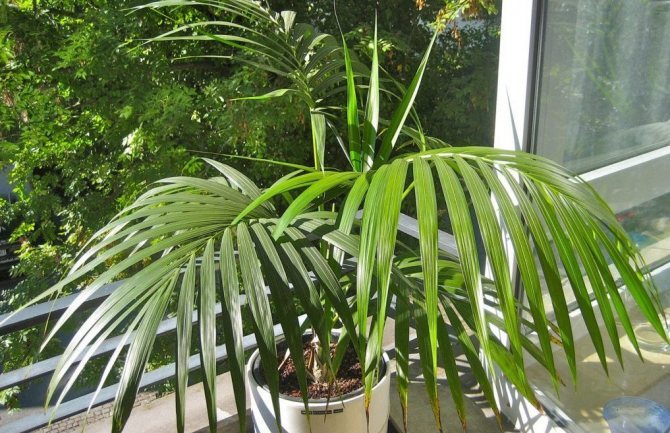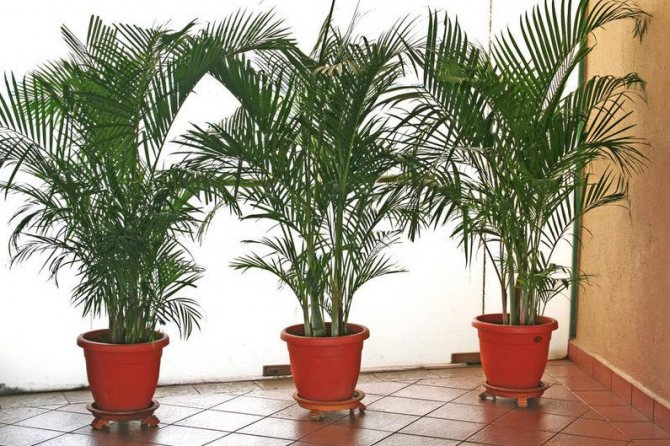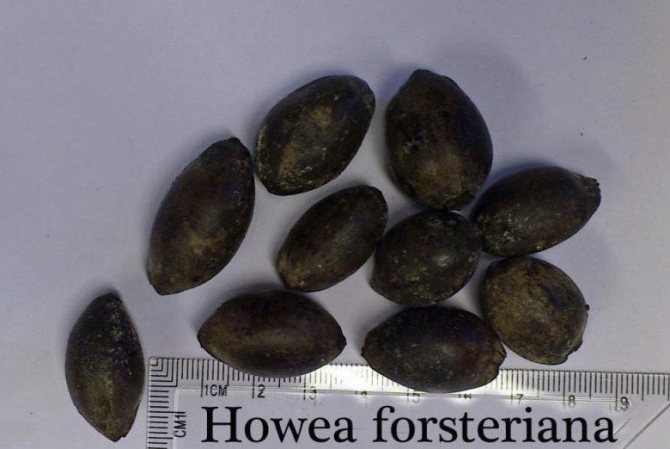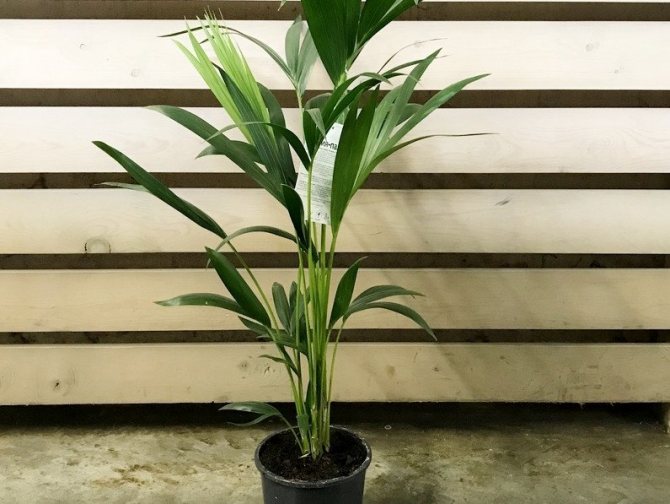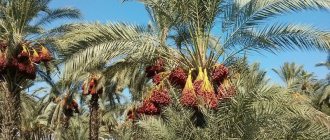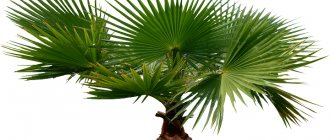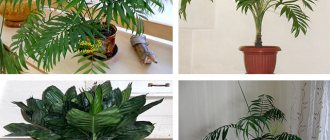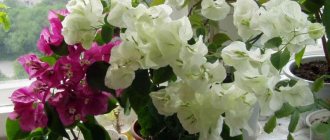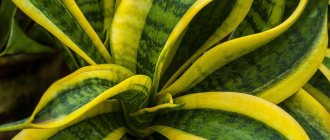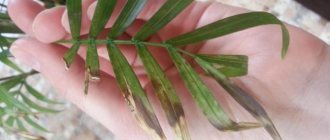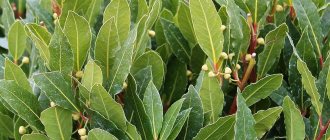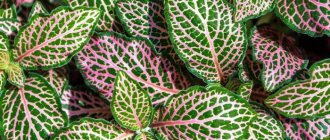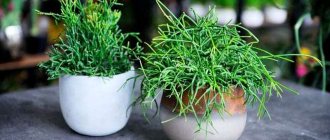Hovea-palm tree, how to grow an exotic flower at home.Hovea is a large green single-stemmed plant. It also has another name, the Kentia indoor palm.
Belongs to the Arecaceae family, a type of palm tree.
Homeland of origin is the Lord Howe Islands, located between New Zealand and Australia.
In the wild, it grows on coastal hills and rocks.
They are very popular among flower growers. The large, fanlike leaves growing on a long trunk are of value. Hovea is not the most lush palm tree, but its sophisticated appearance and gracefulness have delighted home gardeners for several centuries. It was grown not only in gardens; it was used to decorate palaces, halls, living rooms.
Botanical description
The homeland of the chic hovei is the volcanic islands of Australia, more precisely one - Lord Howe, known throughout the world for its soft sandy beaches and unforgettable surfing. This unpretentious plant prefers basalt rocks and coastal hills, and is extremely hardy: perfectly takes root in apartments, offices, and on balconies, sometimes growing up to 15 meters in height! But more often such a giant can be admired only in natural conditions: domestic palms are much more modest and do not grow higher than 3 meters.
The hoveya palm is a real miracle of nature: it can bloom! Imagine a picture: thin, upward stems, strewn with numerous round balls of a warm yellow hue - just like mimosa. But this, alas, can only be observed in natural conditions and occasionally in greenhouses.
In the photo below, you can see how the hovea blooms:

Hovea is a single-barreled palm tree. In the upper part of it, many stems are formed. Stems are covered with leaves - large, pinnately dissected, bright color... Young plants growing in houses develop many basal shoots, but over time, a single and very powerful trunk is formed. It differs from its “comrades” by its slow growth: it is capable of producing only 2, maximum 3 new leaves per year. But he lives for a long time - two or even three decades. Provided, of course, good care.
By the way, one of the branches of the economy of tiny Lord Howe is the export of seeds of this particular palm tree.
Types for growing at home
There are only 2 varieties of this plant. In many ways, these palms are similar. But they differ in size and structure.
Hoveya Forster
The height of the palm tree reaches from 12 to 15 m. The shape of the trunk is straight. Leaves are pinnate, long and wide, slightly curved. Their color is deep and rich.
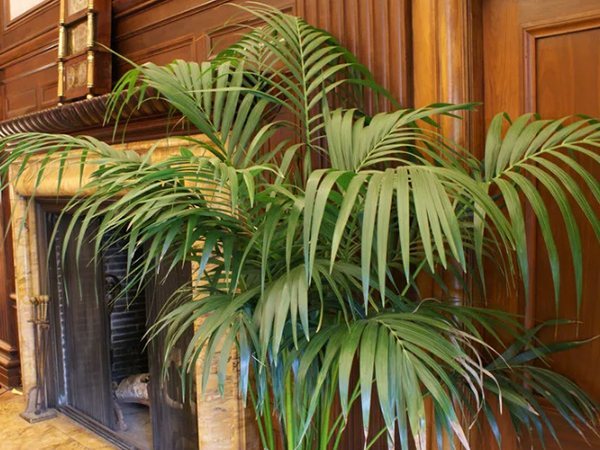

The length of the leaf plate reaches 2.5 m, and the petioles - up to 1.5 m. The palm tree can grow in relatively cool conditions (but not lower than +10 degrees).
Another name is Hoveya Forsteriana. Note! In greenhouses, representatives of this variety not only bloom, but also bear fruit.
Hovea Belmora
This plant is known for its short stature. The barrel has a thickening at the bottom. The leaves are composed of many smaller, narrower and curved plates. Their length does not exceed 4.5 m... In confined spaces, growth slows down. The maximum height that can be achieved is only 3 m.
Hovea and hamedorea: differences
Both chamedorea and hovea belong to the Arekov family and are so similar in appearance that even experienced flower growers sometimes confuse them. But there are still differences between them. Firstly, the leaves of chamedorea are noticeably softer and grow in clusters on each shoot. Hovea's leaf plates are fishtail-like and stiffer. And secondly, no matter how slowly the hovea grows, chamedorea grows even more slowly and does not stretch above 10 meters in the wild.
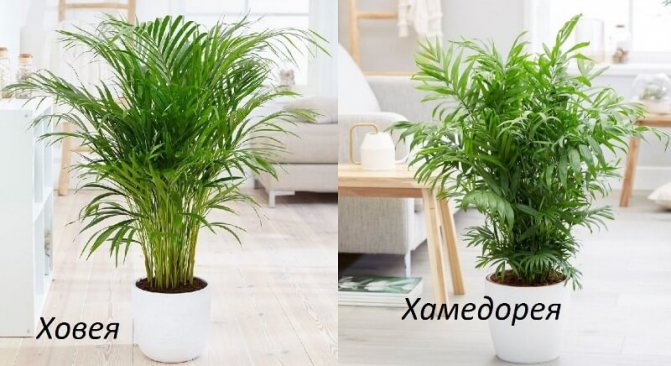

Self-breeding hovea indoors
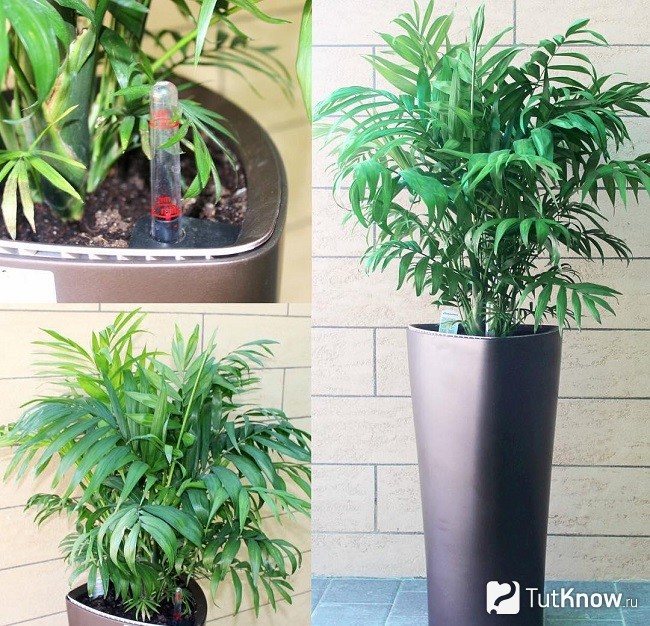

You can get a new feathery beauty only by planting seed or dividing a bush.
The first method is not very easy for novice florists. The plant has a very slow growth rate and it will take 5-7 years for Kentia to grow noticeably. Seeds can germinate for a very long time, some hatch for 2-12 months, and many can be expected from a year to three. Perhaps the reason is that seed germination disappears after 8-16 weeks after harvest. Since the seeds ripen for a very long time, they could have been harvested in an insufficiently ripe state.
When germinating seeds, it is important to maintain temperatures of 25-30 degrees and humidity of 100%. It is necessary to put the seedlings in a place with diffused soft lighting and regularly ventilate, not forgetting to moisten the soil a little.
When the first leaf appears on the seedlings, you can dive into separate pots with a diameter of 7-9 cm. It is important not to tear off the seeds when transplanting seedlings, as they supply the young palm with nutrients for a long time.
If you propagate hovea by planting a bush, you will need to do this in mid or late spring. The container or pot should match the size of the root system of the cut. Usually 15 palm stems are placed in one container.
Varieties and photos
The hovea comes from the Arekov family, which unites only two species. Below are photos and descriptions of hovei varieties suitable for reproduction and care at home.
Forster (Forsteriana) (Howea Forsteriana)
Reaches 12 meters in height, the trunk at its base is not widened. Leaves are pinnate, wide, curved, up to 2.5 meters long, petiole length 1.5 meters... Of the two types, it is this one that is most resistant to coolness (but not lower than +10 degrees). Has a deep and rich color. The photo below shows Hoveya Forster (Forsteriana):
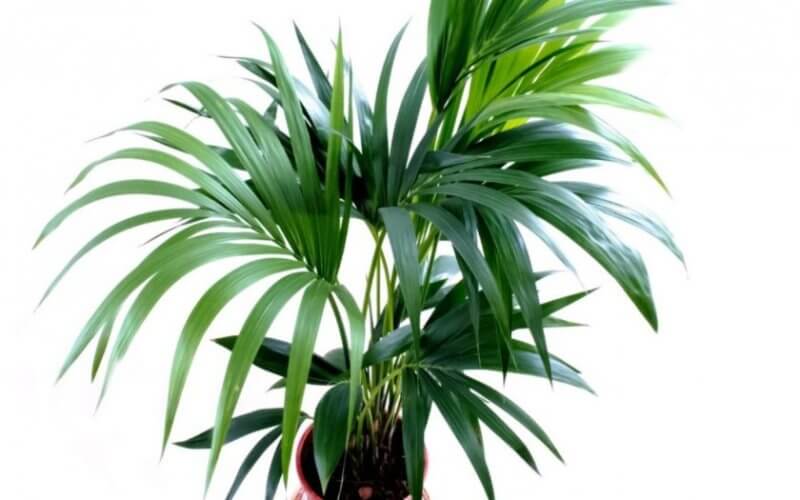

Belmora (Kentia) (Howea belmoreana)
Stunted view. The trunk is dense, thickened at the bottom. Leaves are narrow, curved, small, bluish, 4.5 meters long. The maximum height is 3 meters. Comfortable temperature +16 degrees. What the Hovei Belmora (Kentia) variety looks like can be seen in the photo below:
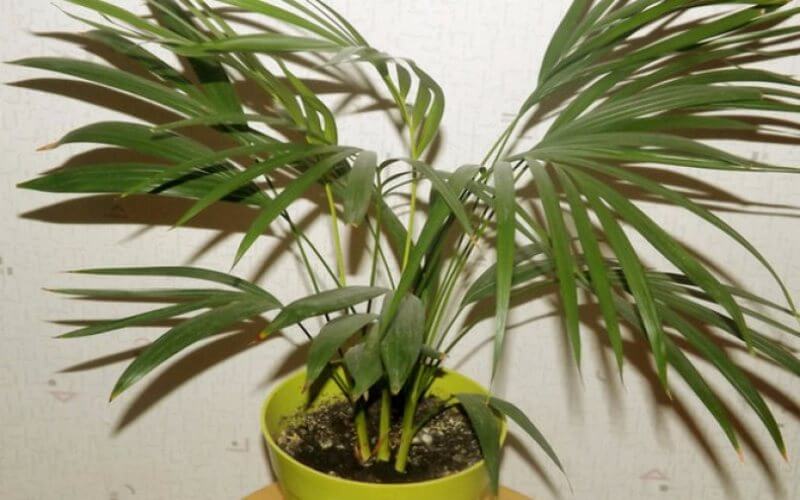

More about the flower
In nature, the hovea palm grows up to 15 meters. The culture grown at home reaches a maximum of three meters. The plant has a spreading rich crown of their lanceolate narrow leaves of a dark green color on elongated petioles. The ends of the leaves are pointed.
Single-barrel culture. In room culture, several specimens can be grown in one tub at once. A slow growing palm produces 2 or 3 leaves each year. By the age of five, up to 10-15 leaves appear on the hovei and the crown becomes quite lush.
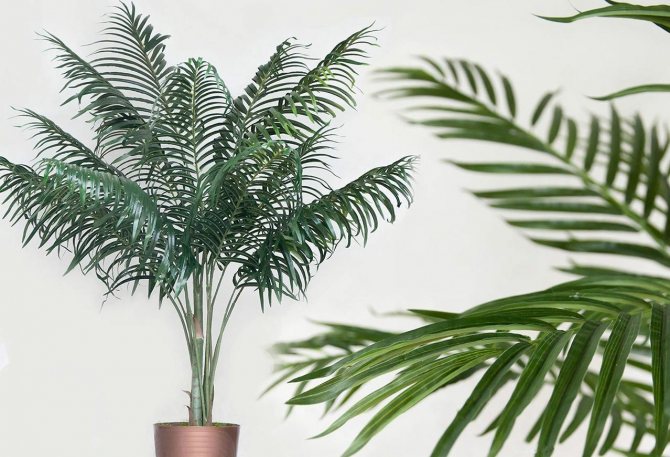

Flowering begins in November or December. Inflorescences resemble mimosa in shape. They gather in small cluster-like inflorescences and then form red-brown elliptical fruits. In domestic culture, Kentia blooms and bears fruit only when favorable conditions are created.
Care
Caring for a hovei at home does not cause a lot of trouble and is completely unobtrusive, it is enough to follow a few simple rules.
Lighting
Like all guests from the tropics, the hovea palm loves sunlight, but does not tolerate direct sunlight. Here's a paradox. Therefore, when choosing a place, give preference to a light corner, but with diffused light... This can be the sill of the south or east window. You can even put it in the back of the room, but watch out: if the flower begins to wither, urgently change the place of residence of the plant.
Temperature regime
Hovea grows well at temperatures from +23 to +27 degrees. A slight increase in temperature does not scare her either, but she will have to spray the palm tree more often and ventilate the room. In summer, the plant can be taken out on an open balcony and even in a garden. But protect the palm tree from drafts - it hates them. The same goes for tobacco smoke.
The rest period is in winter, which means that the owner will need to create comfortable conditions for rest for his green pet. These days, the hovea should be at a temperature of +15 to +18 degrees.
The culture is able to withstand slight frosts and even frosts, but only if the root system is well insulated. Otherwise, if the palm tree stays in the cold for 3-4 days, it will die.
An adult plant copes with a sharp change in temperature during the day and nightbut since this is stressful for him, such situations are best avoided.
Humidity and watering
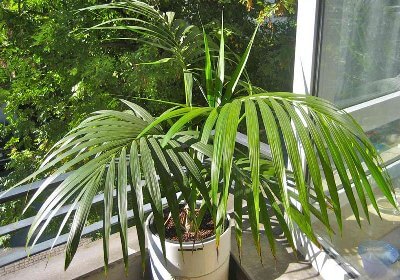

Watering should be done regularly and without sparing water. Make sure that the top layer of soil in the tub is always slightly damp, but also do not allow liquid to stagnate, otherwise root rot will ruin the palm tree.
In summer, watering is frequent - 4-6 times a week, in winter - once a week, with the central heating operating - 2 times.
Do not water the palm tree with tap water, melt or rainwater... They contain too many harmful compounds. Run the liquid through a household filter or buy bottled water.
Hoveya does not have any special requirements for humidity, but experienced flower growers advise in the summer (in the mornings and evenings) to spray its leaves with water, and in winter - to put it away from heating appliances and household appliances that get very hot. If the humidity level is below 30%, place a container of water near the plant or turn on a humidifier, this will be useful.
Top dressing
The fertilizing schedule is built as follows: from May to September, during the period of active plant growth, and with special complex fertilizers for palms. Frequency - once a week together with irrigation water. Alternate between mineral and complex fertilizers.
Palms over ten years old are especially acutely deficient in magnesium and potassium, so be prepared to buy special supplements.
Transfer
Young palms should be replanted once a year, over five years old - once every three years... This is done in the spring as follows.
- Remove the hovea from the old pot and place it in a bowl of warm water. Add 0.5 g of potassium permanganate to the water. When the earthy clod softens, shake it off.
- Place the palm tree in a new pot of potting soil. The substrate can be bought at a flower shop or you can mix gray soil, black soil and sand in equal proportions. Do not forget to heat the ground in the oven or freeze it in the freezer.
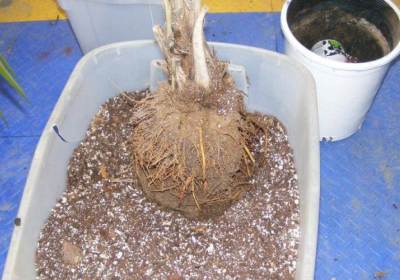

The best pot is made of plastic or glazed ceramic light colors. It is better not to choose an untreated ceramic pot - the palm tree may dry out.
At the bottom of the tub, be sure to make 3-4 holes so that excess water comes out. Drainage - crushed stone, brick chips, expanded clay, pebbles.
What conditions need to be created at home
Ornamental palms, optimized to cold temperatures, are often quite unpretentious in terms of keeping conditions and microclimate. But all the same, the necessary microclimate and optimal temperature regime for such plants is a prerequisite.
Otherwise, the home flower will hurt, and in advanced cases, it will undergo bacterial or fungal lesions.
Seat selection
Belmora and Forster are unpretentious in lighting, so they can be grown almost anywhere in the house. But it is best to choose a slightly shaded corner for this, since direct sunlight causes burns. The palm tree feels good on the southern windowsills, but the northern part of the house will do too.
In the summer, the hovei must be shaded, for this you will need a transparent tulle (or other light light fabric), which is removed in winter (at this time of the year, the palm tree does not need shading). During periods of shortened days, the hoveu must be highlighted; the duration of daylight hours should be at least 10-12 hours.
In the room where the hovea grows, natural or forced ventilation should be provided. Representatives of this species are quite whimsical to the purity of the air, so dirty air can inhibit their growth. Palm drafts are not permitted as they can cause colds and leaf fall.
Important! Hovea does not tolerate tobacco smoke. Even a short stay under the influence of its substances causes oppression of the palm tree.
Temperature regime
The optimum temperature for keeping this variety of indoor palms is considered to be + 18 ... + 23 ° С. In winter, this figure can drop to +16 ° С. Temperatures below + 15 ° C are undesirable for hovea, as this slows down metabolism, and therefore, its growth.
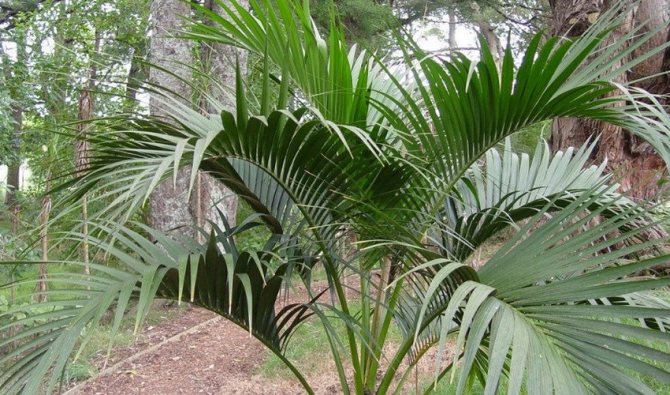

Air humidity
This plant is most demanding on moisture in spring. During this period, active growth and development of foliage and stem is observed, so the air in a room with a palm tree needs to be humidified regularly. Hovea needs additional air humidification when the daytime temperature exceeds +24 ° С (then the air is humidified at least once every 1-2 days).
In winter, the hovea does not need air humidification, however, light wetting of the foliage a couple of times a month has a positive effect on its growth.
Reproduction
From seed
Hoveu seeds are rarely propagated, because it is difficult to obtain high-quality material. And the germination rate is only 50%.
- Soak the seeds for 5 days in any growth promoter.
- Mix vermiculite, perlite and leafy earth in equal parts, fill the pots (but not completely, but leaving 1.5 cm of free space on top).
- Saw off the shell on the seeds and stick it into the ground with the sawn end.
- Cover cups with jars or plastic and set in partial shade. Seeds should be grown at a temperature not lower than +27 degrees.
- The first shoots can appear both after 3 months and after six months, after which they are seated in containers about 8 cm high.
- When the shoots have reached a height of 4 cm, they can be planted permanently in the soil for palm trees.
By dividing the bush


Reproduction by dividing the bush is easier and faster.
- Pull the hovea out of the tub and shake off excess soil. You will have to act quickly - if the roots dry up, the palm tree will die.
- Divide the plant without damaging the root system, plant the cuttings in separate containers.
- Seedlings are grown in partial shade, protecting them from drafts and watering as the soil dries up by 1-2 cm. Temperature - + 20-25 degrees. Fertilization should be applied after 2 weeks.
How to properly care for a home plant
If a hovea palm tree grows in your home, proper care for it will help the plant acquire a beautiful, well-groomed appearance.
Water the palm tree regularly, but do not get too carried away with this process. Examine the soil: if its top layer is dry, it means that you need to moisten the soil. In the summer, it is necessary to water the plant more often, since the land dries out faster. In winter, the amount of watering should be reduced.
Fertilization and feeding
It is necessary to start feeding the soil in the spring, and regularly carry out such events until the fall. For this, use fertilizers containing trace elements for ornamental deciduous plants. Do not feed the palm tree in winter.You can carry out top dressing by spraying the leaves with mineral fertilizers of weak concentrations.
Pruning features
It is necessary to trim the palm very carefully so as not to touch the trunk. Do not remove a large number of leaves - the plant will be bare and ugly.
It will be enough to cut off the broken and dead leaves. Make an incision at a distance of 2 cm from the trunk. If you notice that the tips have dried out on some of the leaves, you need to cut off these areas.
Read also: What are the useful properties for the human body, is the use of alder fruit
Hovea transplant
The palm tree does not like to change its habitat too much, so it is necessary to transplant the bush as a last resort - when the root system fills the entire container. This usually happens 3 years after planting the plant.
Diseases and treatment
- What to do if the leaves dry? There can be several explanations for this. If the problems began soon after transplanting, you either picked up the wrong pot (for a small palm tree - a large flowerpot), or damaged the roots, or made the wrong potting mix. Another option - the purchased soil was infected with pests, and you forgot to process it.
- Brown spots on the leaves indicate that the plant has received a sunburn.
- The dying off of foliage signals that the room temperature is too high.
- If the hovea stops growing and the leaves turn pale, it lacks nitrogen.
- Lack of light and low temperature of the content causes chlorosis of the lower leaves.
- Spots on elliptical leaf plates appear when using copper-containing preparations.
- Do leaf tips turn brown and then die off? You are overfeeding your plant.
- Root rot is caused by excess moisture. If the lesion is small, try cutting out the damaged area with a disinfected blade. With a large area, saving a palm tree will not work.
- Mealybug damages both roots and stems. Having settled in the axils of the leaves, it begins to actively develop new territories, sucking juice from the plant. The leaves are covered with brown spots, curl and wither, the palm stops growing. Folk remedies will not help here. Adult insects are collected by hand, and then the plant is treated with an insecticide "Aktara", "Aktellik", "Bankol", "Inta-vir", "Vermitic". In total, at least 3 treatments are carried out with a 10-day interval.
- Aphids pierce the leaves and also feed on sap, leaving behind sticky traces - a medium for the growth of the fungus. The palm turns yellow and does not grow. Hovei should be washed with green soap under the shower to wash off adult aphids, and the larvae should be removed with a cotton swab dipped in onion or tobacco infusion. If there are many pests, only a special tool "Confidor", "Alatar", "Tiara", "Warrant", "Tanrek", "Biotlin", "Confidor" will help.
- The spider mite settles on the leaves and in the axils, entangling the plant with cobwebs. The leaves are covered with punctures and yellow sores, rough to the touch. Suitable preparations: biological ("Akarin", "Fitoverm", "Agravertin") and chemical ("Fufanon", "Omite", "Apollo", "Actellik", "Neoron").
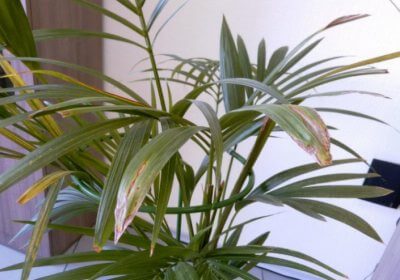

Difficulties in growing
As mentioned above, there are practically no difficulties with this palm tree. In some cases, diseases or pests may appear, but this is rare, and it is not difficult to cope with them.
Pests
Separately, spider mites can be distinguished. If you notice them in time, then the insects can be easily removed with an ordinary cotton swab. In advanced cases, you will have to resort to acaricides... They are used to treat leaves and soil.
Aktara or Fitoverm will help get rid of thrips. From aphids use solution regular laundry soap... The rest of the parasites are fought with appropriate insecticides, following the instructions.
Diseases of Hovea


This palm is most susceptible to pink blight and leaf blight. They occur with poor drainage or irrigation errors. The bases of the leaves rot, and young shoots become lethargic and weak.
Spores of the corresponding color appear on the plant from pink rot. Long-term treatment with fungicides will be required until the palm tree returns to normal.
Attention! With low light or increased acidity of the soil, chlorosis develops. From waterlogged soil, a marginal burn appears on the leaves.
After using copper-containing fungicides, fungal rot on the leaves often occurs. In mixed micronutrient fertilizers, copper is safe, if you observe the measure.
Photo gallery
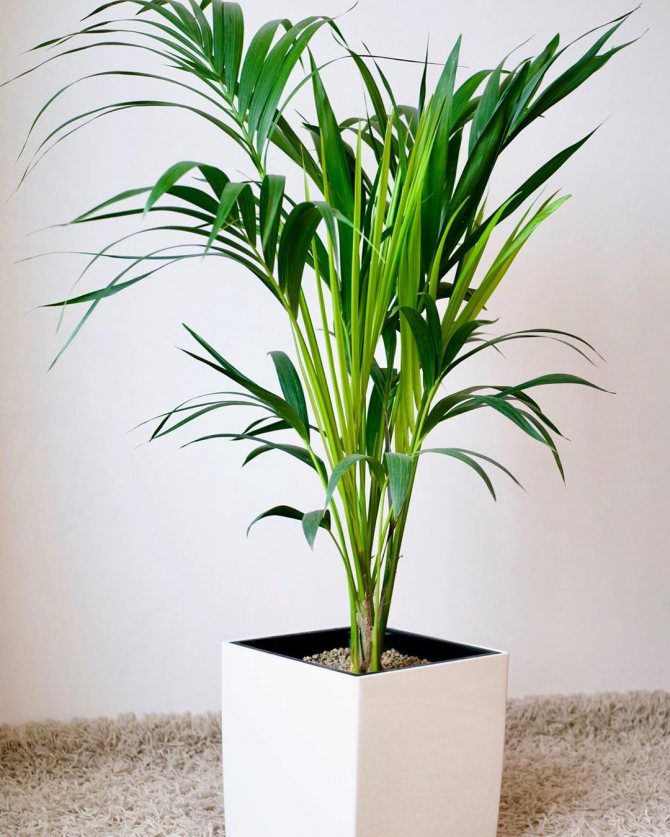

floriglie
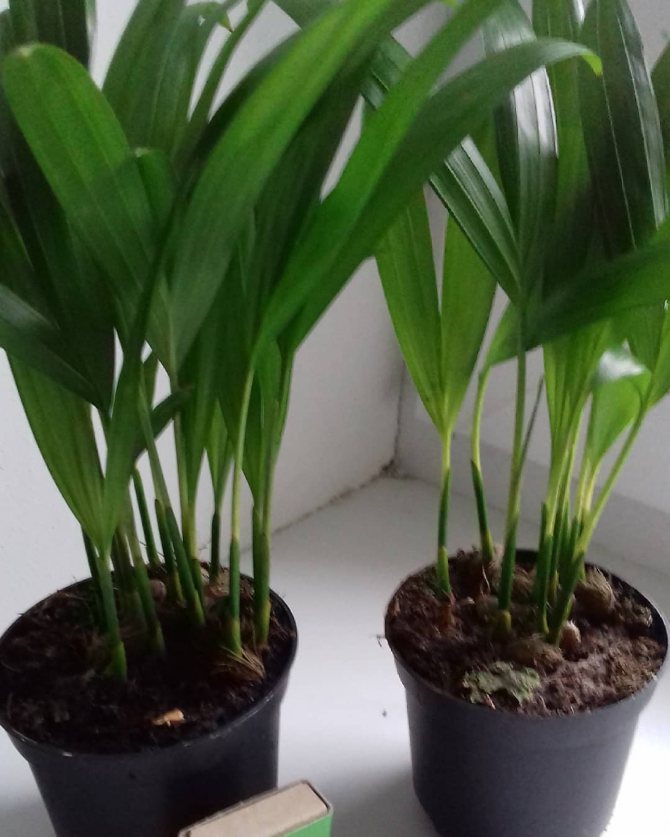

tanya.larinaz
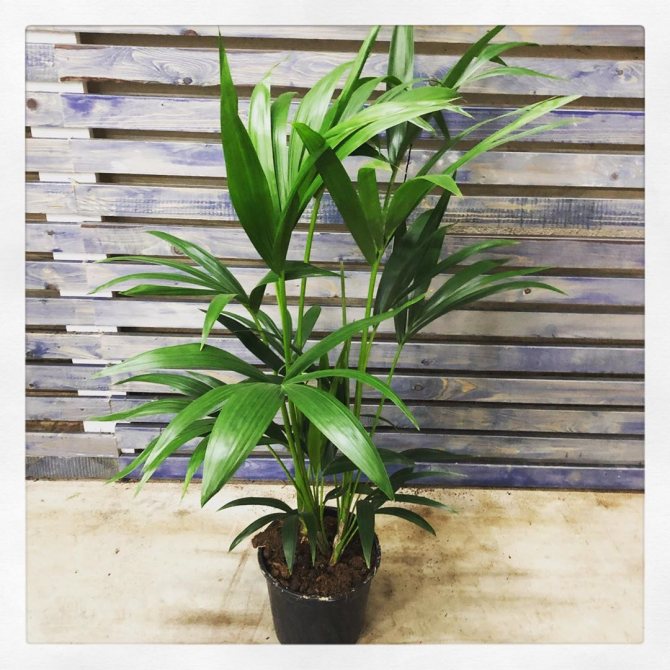

vg_plants


gordirina11
Interesting facts about Hove


Connoisseurs use this type of palm not only for landscaping premises; hovea can successfully work as a natural filter. It has the ability to purify the air in the room where the pot is installed, saturates it with moisture and can eliminate harmful chemicals in the environment.
Kentia maintains a strong energy of kindness in the house, enhances the atmosphere of kind-heartedness, gives everyone present vigor, inspires optimism and does not let the spirit drop. The plant helps to reveal to a person the sociable qualities in himself, helps to increase enthusiasm. Suitable for people born under the signs of Pisces and Gemini.
Indoor hovea: types
For home cultivation, two types of hovea are suitable:
Howea belmoreana- on the sharp Lord Howe, from where this beauty comes from, it stretches up to 10 meters. The trunk is covered with rings, the widest at the bottom and narrower at the top. The length of the feathery leaves is about 40 centimeters, but there are also those that grow up to 60 centimeters.
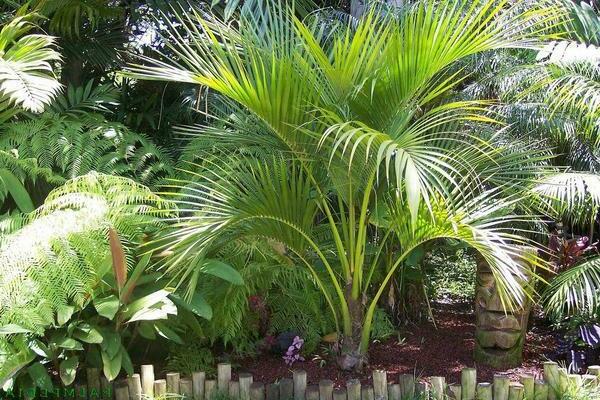

Howea forsteriana Howea forsteriana - The diameter of the trunk growing in natural conditions is the same. It has feathery, slightly curved leaves.
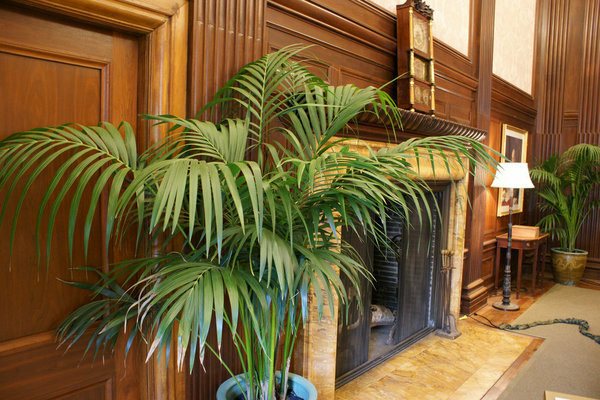

Hovea (Kentia) transfer


April is the best month for a hovea transplant. Until the plant reaches three years of age, the transplant should be annual. In subsequent years, this event is held only when the roots become cramped. In adulthood, the plant needs an annual change of the top layer of the earth. It is necessary to transplant the plant into a container whose diameter will be no more than 3 centimeters larger than the previous one. If you plant in a larger pot, then the plant will be busy with the development of roots, and not the part that is above the surface. The bottom of the pot should be stable and massive, and inside there should be a drainage layer of 4 centimeters. For this, broken brick, pebbles or expanded clay are suitable.
The transplant should be carried out in a transshipment way, keeping a clod of earth on the roots. Having transplanted the plant, you need to pay attention that the stems go deep into the ground at the same level as before.
Hovea loves loose, light soil. Suitable soil can be purchased from a nursery or any specialty store. You can make an earthen mixture on your own using sod soil, foliage humus, humus, sand in proportions 4x2x1x1, you also need to add a small amount of charcoal there.


